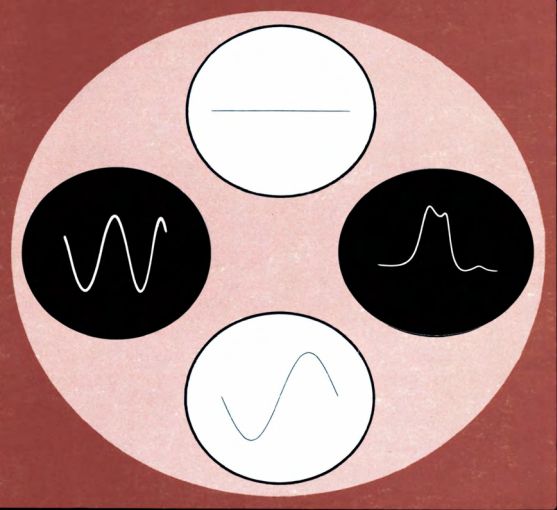Contents:
2 How to OPERATE an OSCILLOSCOPE
4 SIGNAL TRACING in RF, I-F, and VIDEO AMPLIFIERS
5 SIGNAL TRACING in the SYNC SECTION
6 TROUBLESHOOTING the AFC and HORIZONTAL-OSCILLATOR SECTION
7 WAVEFORM TESTS in the HORIZONTAL-SWEEP SECTION
8 TROUBLESHOOTING the VERTICAL-SWEEP SECTION
9 SIGNAL-TRACING the SOUND I-F and AUDIO SECTION
10 TROUBLESHOOTING POWER SUPPLIES
11 RADIO-RECEIVER TROUBLESHOTING

Preface:
Troubleshooting with an oscilloscope is widely accepted today as the most reliable method for analyzing modern electronic circuitry.
Service technicians who fully understand the workings of a scope rate it among their most valuable instruments. The purpose of this guide is to help you obtain the maximum benefits from a scope, even if you have never used the instrument before. The guide was planned and written with a full appreciation of the type of practical instruction technicians need.
To begin with, you will learn the fundamentals of waveform analysis as well as the purpose and function of every operating control, regardless of whether your oscilloscope is simple or elaborate. Later on, the selection and use of different types of probes are explained. This consideration is very important in obtaining proper waveform displays.
The major portion of the guide concentrates on troubleshooting television and radio receiver circuits. Audio amplifiers have also been included. You will learn how to use a scope for localizing troubles to specific circuits and, in some cases, to the defective component itself.
Since the first edition of this guide was published, television and radio servicing has become more sophisticated. For example, fm stereo multiplex reception has become very popular, and receiver sales are high. Accordingly, the essentials of multiplex testing have been included in this new edition. Many circuits are now being designed around transistors instead of tubes; consequently, the guide now has a basic coverage of solid-state devices. Owners of many television service shops have added triggered-sweep scopes to their complement of test equipment. Inasmuch as these scopes are somewhat more difficult to operate than standard scopes are, a basic discussion of them has been included.
Electronics technology is becoming increasingly more advanced. We must keep up with these advances if we are to remain competitive. Unless the full capabilities of oscilloscope use are clearly understood, it will become extremely more difficult in the future for you to properly service modern circuitry.
In preparing this edition of Troubleshooting With the Oscilloscope, I have recognized the current need, and have made a dedicated effort to meet it. In order for you to obtain maximum value from the contents, I strongly suggest that you actually work with your equipment as the various procedures are described. This "reinforced learning," gained at the workbench, will prove to be much more valuable to you than the knowledge you can acquire from just reading the guide.
Also see: Guide to VOMs and VTVMs